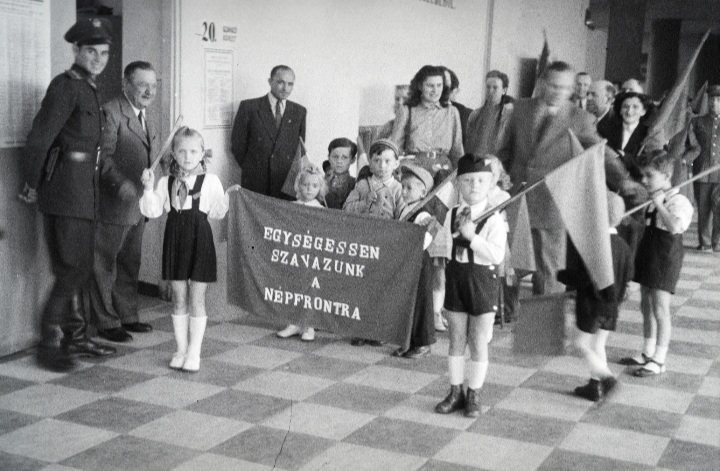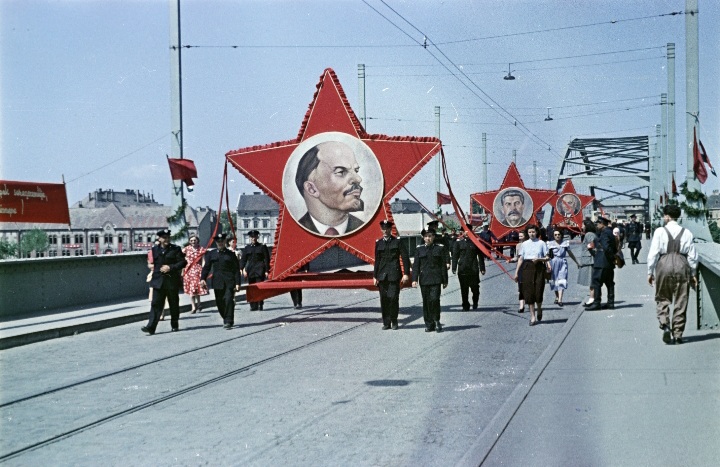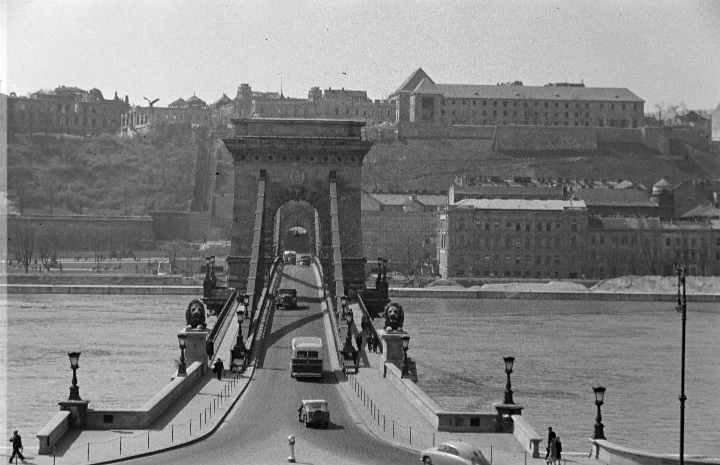PHOTO GALLERY: Everyday life in ’50s Hungary
Needless to say, life was very different back then in ’50s Hungary than it is now. However, many believe that the world is going backward again with the current economic crisis and general social unrest. If you also get the blues reading the depressing news, we thought to cheer you up with this rare vintage photo gallery from ’50s Hungary. While you are here, you can also learn what everyday life was like in this distant weathered era.
The post-WWII era brought dark ages to Hungary as the country fell under the occupation of the Soviet army. After the immense destruction of the previous decades, the government set the reconstruction of the war-torn country as its main priority, or at least that was their propaganda. In parallel to this faux noble idea, the party in power set off to completely restructure the national democracy as part of the communist takeover.
The new political system meant significant changes regarding all aspects of life, which negatively affected both families and individuals. The socialists pledged to abolish all social inequalities and unfairness, however, in the process of doing so they disregarded deep-rooted traditions and customs. The political pressure had a disruptive effect on all kinds of human relations, causing deviant behaviour and all types of neurosis later on. In regard to the dietary customs of the society, Hungary saw a slight improvement compared to pre-war levels. Even though, certain goods were still rationed (bread and meat tickets were reintroduced in ’51), most of the workers had access to cheap, cooked meals at least once a day, at the work canteens. It was the decade when school meal programmes started to become more widespread all over the country which lifted a huge burden off working parents’ shoulders.
Those who filled important positions or belonged to the upper class (the bourgeois and the landed gentry) in the past regime before ’45 either fled the country or took on ordinary jobs unless they were not already imprisoned. Deprivatisation was also a characteristic concept of these weathered ages. The peasantry, in order to avoid the government’s pressure, moved to the big cities even if it meant leaving their lands behind. To ensure social equality, authorities were rather focusing on depriving the affluent of their wealth instead of lifting up the poor. Nevertheless, the government made sure to provide jobs for everyone while keeping the wages low, except in the case of the political elite who were given spacious homes and high-quality food articles. The Rákosi era, followed by Imre Nagy’s overtaking, loudly proclaimed the success story of the new regime. Unemployment was nearly non-existent while health care became free for virtually all members of society and so did education as well as nursery and kindergarten services. More and more people from the villages joined the urban working class, along with women from previously single-income households.
Read more: 33 years ago today, Hungary tore the first hole in the Iron Curtain – PHOTOS
As a result of the increased workforce, modernisation accelerated in an unparalleled fashion. The number of powered villages grew, and radio programmes and cinemas became available to a larger crowd. Although personal vehicles were still a rare sight in the country, motorcycles had gotten popular among the working youth who were finally able to afford them. Hungarian healthcare underwent a considerable improvement with the arrival of new medicine and especially the introduction of antibiotics. Doctors treated fewer and fewer syphilis and pulmonary patients. The rate of child mortality also decreased significantly while the average life expectancy rose. At the firms as well as in transportation, commerce and offices, workers were now eligible for pensions.
The political power had been centralised and it did not refrain from using terror on an everyday basis. Private and religious schools, cinemas and book publishers were all deprivatised, and multi-party press was banned. The old worldview characterised by God-fearing, democratic and humanist approach was forcefully oppressed and strategically replaced by the beliefs of Marx and Lenin, in all institutions and workplaces. Elementary education was expanded from 4-6 to 8 grades and labourers had the opportunity to finish their studies by taking correspondence or evening courses that were previously not available. The Russian language was introduced as a compulsory school subject. In conclusion, it is fair to say that the new system’s quantitative view took a toll on the quality of education though, which was felt mostly in the case of social and art-related courses.
On a positive note, cultural projects such as theatrical and cinematographic productions, book publishing, and the music industry received considerable governmental aid, even though the not-so-secret agenda of transmitting propaganda messages to the public through these various media was always there. The most typical genre of the era was the socialist anthem that praised the party and the great Communist leaders. These anthems were sung not only at processions and former gatherings but also among friends in order to show devotion to the party and possibly avoid being reported by informers who were often unwillingly employed by intelligence.
The ’50s in Hungary are often remembered as the golden age of sport. In the ’52 Helsinki Olympics, the Hungarian team obtained 16 gold medals. The Puskás-led Golden Team was known by football fans all around the globe. However, the party propaganda also used these successes to its own advantage and increase the regime’s popularity. As for advancements, ’53 marks the year when the formerly known People’s Stadium – now Puskás Stadium -was built. Besides, the construction of the Budapest metro also began in this decade.
Despite all that, citizens were struggling in all aspects of life. Buildings and offices were left unheated in the middle of the harsh winter months due to coal shortages. People were freezing in their homes while reading the loud propaganda articles written about victorious Communist success stories. The income and consumption of Hungarians dropped by 10-15 percent between ’50 and ’53. Former Prime Minister Imre Nagy made a number of fruitful attempts to restore the old order by introducing tax releases for the peasantry, terminating the costly and unnecessary investments, and instead, reverting funds to the production of consumption goods. However, he was ousted in 1955 and Mátyás Rákosi replaced him in power. MDP (Hungarian Labour Party) ejected Rákosi from his parliamentary position on the excuse of his poor health. They believed, with these modifications, they could continue pushing forward the wheel of Socialism, however, they were in for a rude awakening. The ’56s Hungarian revolution put an early end to the first chapter of this dark era, however, freedom was still a distant mirage.














Read more: What was LGBTQ+ life like in communist Hungary? – PHOTO, VIDEO
Source: mnl.gov.hu, rev.hu, tortenelem.fazekas.hu
please make a donation here
Hot news
What happened today in Hungary – 26 July, 2024
Drama: number of births in a 20-year low in Hungary
Yay or nay? – 6 odd Hungarian delicacies that make our skin crawl
Budapest tourism “exploded” this past weekend
Container transport in Budapest may stop: How will this affect Hungarian economy?
Minister: Hungary will protect its territory by every means possible




